Evolutive Housing: Common Property and Addressing the Middle Scale in Houston
2022—2023
This project is in collaboration with Houston Community Land Trust (HCLT), an independent 501(c)(3) non-profit.
This project is funded by the Phyllis M. Taylor Center for Social Innovation and Design Thinking and the Michael Sacks Chair in Civic Engagement and Social Entrepreneurship.
Additional funding provided by CELT Faculty Mentored Undergraduate Research Fund.
Team: Nimet Anwar, Omar Ali, Joey Tomshe, José Varela Castillo, Olivia Vercruysse
Aerial Cinematography: Nicholas LiCausi
Related Project: Home, Sweet Home
![]()
2022—2023
This project is in collaboration with Houston Community Land Trust (HCLT), an independent 501(c)(3) non-profit.
This project is funded by the Phyllis M. Taylor Center for Social Innovation and Design Thinking and the Michael Sacks Chair in Civic Engagement and Social Entrepreneurship.
Additional funding provided by CELT Faculty Mentored Undergraduate Research Fund.
Team: Nimet Anwar, Omar Ali, Joey Tomshe, José Varela Castillo, Olivia Vercruysse
Aerial Cinematography: Nicholas LiCausi
Related Project: Home, Sweet Home


Housing availability in Houston is not unlike the typical offerings of a suburb: single-family homes and apartment complexes of various size and scale, but as housing needs grow Houston is increasingly looking to “missing middle” housing types.1 As the housing needs of Houstonians evolve beyond the generic, the introduction of variability and flexibility within housing addresses the disconnect between the specified needs of its residents and the current production of static housing. The lack of zoning by-laws makes Houston a prime location for incorporating a mixed-type approach to various neighborhoods to address not only housing availability, but affordability and accessibility as well.
Two Models, Both Limited
Presently, there are two primary models that address the need for new housing strategies in Houston. The first model takes existing lots (vacant and otherwise) and incorporates density by building at the middle scale; for instance, townhouses, row houses, duplexes, and more. Although this brings much needed density to the neighborhood, it typically only works for those with more financial means and is a vehicle for displacement and gentrification. The “missing middle” model addresses accessibility to a multitude of housing types but fails to address affordability to a range of income levels on its own.2 The second model is the Community Land Trust (CLT), which uses a cooperative form of land acquisition, but typically allocates single-family residences with a lack of diversification of type, and thus a lack of density that will not be sustainable in the long term.3 This model addresses affordability, but not inclusivity due to the finite amount of land available to the CLT and available in Houston writ large. This research will speculate on a housing model that incorporates both approaches toward a more economically viable and attainable housing stock for all Houstonians.
Specific Variability
Houston is one of the fastest growing cities in the country with an exponential increase in cost for land and home ownership, and this has only been exacerbated by the COVID-19 pandemic. There are finite options for inclusive housing for both lower socio-economic and middle class groups. The existing condition of single-family housing is far too specific and fails to address flexibility for a multitude of household types beyond the nuclear family. There is a growing need for housing for atypical or non-traditional families, ranging from multi-generational, collective, and single-parent households.4 The existing traditional model of the single-family house has proven to be unsustainable due to its lack of consideration of the need for density because of a limited amount of land, a diversity in family types, and economic inclusivity.
Presently, real estate developers are controlling the conversation around housing availability. They buy up land en masse and develop housing that is out of reach for a majority of Houstonians. Architects can evolve the debate in partnership with community leaders to develop long-term sustainable strategies for providing accessible, affordable housing. Building more densely, leaves room for more community focused programs to emerge such as cultural centers, community gardens, and libraries. The CLT model also reinforces the idea of stewardship that extends beyond the domestic space into the collective shared spaces.
In Conclusion
Cities across the country are dealing with housing availability issues due to restrictive zoning laws that hinder the application of multifamily housing at the middle scale. Houston is on the forefront of progressive strategies for filling this absence through its relaxed approach to zoning as well as the excess of speculative “missing middle” housing projects led by developers. This approach has shown to be useful, but is still keeping housing ownership out of reach to a large percentage of Houstonians. Houston serves as a critical case study that can be applicable to cities throughout the country that are in the midst of addressing a scarcity of affordable housing. Architects can be at the forefront of this conversation by partnering with CLT’s and producing new strategies for housing at the middle scale to provide inclusive housing for not only some but for all.
1 In Houston and everywhere else, (lot) size matters. (2021, April 8). The Kinder Institute for Urban Research. https://kinder.rice.edu/urbanedge/2021/04/08/houston-housing-affordability-townhomes-lot-size-matters-gentrification
2 Parolek, D. G. (2020). Missing Middle Housing: Thinking Big and Building Small to Respond to Today’s Housing Crisis. Island Press.
3 At one year, Houston’s Community Land Trust charts progress,. (2019, June 18). The Kinder Institute for Urban Research. https://kinder.rice.edu/urbanedge/2019/06/18/one-year-houstons-community-land-trust-charts-progress-confronts-questions
4 Friedman, A. (2002). The Adaptable House : Designing Homes for Change (1st ed.). McGraw-Hill Professional.